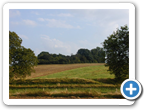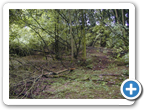The Western Front Today - Hawthorn Crater, Somme
Hawthorn Crater was one of the 17 mines that were exploded by the British on the morning of 1 July 1916 to signal the start of the Somme offensive. It is one of the few remaining craters (along with, notably, Lochnagar), however its chief claim to fame is two-fold.
Firstly,
the Hawthorn Crater was the first to be blown that day, at 0720 - eight
minutes before any of the remaining 16; and secondly because the explosion
itself was actually captured on film.
The mine took seven months to lay, being 75ft deep and
1,000ft long. It was prepared with a 40,600lb ammonal charge by 252nd
Tunnelling Company. The resultant crater was 40ft deep and 300ft wide.
Today it forms a figure of eight, the result of a subsequent British mine
explosion (with a 30,000lb ammonal charge) under a German fortification in
November 1916.
The
1 July 1916 mine explosion was captured on film by
Geoffrey Malins for the
highly successful officially approved film 'The Battle of the Somme'.
He shot the footage from a vantage point near the famous Sunken Lane. Whenever the Somme offensive is discussed on TV Malins' footage of the Hawthorn Crater is invariably shown. Also nearby is the Argyll & Sutherland Highlanders Memorial.
1916 Film Footage of Hawthorn Crater
Present Day Film Footage of Hawthorn Crater
References:
Before Endeavours Fade, Rose E.B. Coombs, After the Battle 1994
Major & Mrs Holt's Battlefield Guide - Somme, Leo Cooper 2000
A howitzer is any short cannon that delivers its shells in a high trajectory. The word is derived from an old German word for "catapult".
- Did you know?


